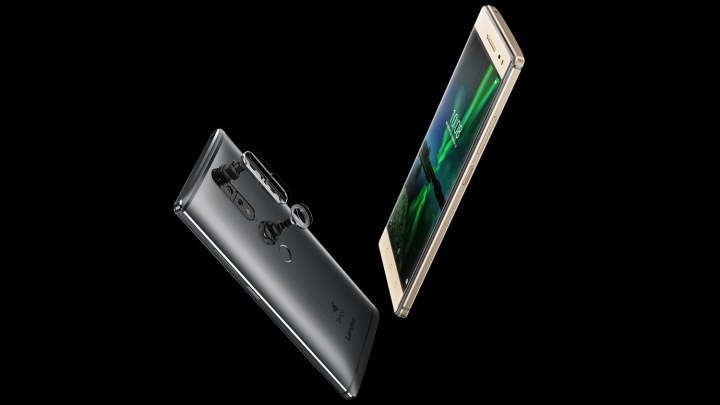
Tango, you may or may not recall, is what Google calls a “computer vision technology platform built for mobile devices.” In practical terms, it is a depth-sensing lens that allows smartphones, tablets, and VR headsets to measure their surroundings. In tandem with a supported processor, Tango modules can map a room in multiple dimensions simultaneously. The result is a more advanced form of augmented reality than what you see in Pokémon Go.
That is a boon for VR: Tango applications are spatially aware, meaning a handset user or headset wearer can interact with, for example, the walls of a room in ways that are impossible with stationary hardware like the Samsung Gear VR, Google Cardboard, and Daydream.
Tango has been under development within Google’s Advanced Technology and Projects lab since 2014, and the Lenovo Phab 2 Pro is the first phone with the tech to hit the consumer market. At 6.4 inches, it is quantifiably a phablet, but we were impressed by its thinness and lightness when Lenovo demoed the device at the company’s Tech World expo. Lenovo said its Tango sensors are capable of sub-inch accuracy, a degree of accuracy demonstrated with digital dominos mapped to real-life surroundings.
Google established an incubator to accelerate the advancement of Tango applications, and has purportedly experimented with various means of “sharing” content among other Tango-enabled smartphones and tablets.
“Over the last few months, we have worked closely with app developers to create a wide variety of smartphone-based augmented reality apps,” writes Justin Quimby, senior product manager for Tango. “Our app incubator program supported a wide range of developers — from Crayola Color Blaster to Ghostly Mansions — to create new ways to do more, play more and explore more with your phone.”
Google says there are more than 35 Tango-enabled apps and games, and the search giant believes soon consumers will insist on buying a Tango-equipped phone in the same manner that they now insist on buying GPS-equipped smartphones. More Tango-enabled devices will be available in the coming year.
Editors' Recommendations
- Google accidentally leaked the Pixel 8 Pro and Pixel Watch 2
- Realme GT 2 Pro has the world’s first 150-degree wide-angle camera on a phone
- My first 2 days with the Pixel 6 Pro: The good, the bad, and the not-at-all ugly
- Lenovo’s cute Smart Clock 2 now comes with a wireless charger for your phone
- Lenovo’s Legion Phone Duel 2 is seriously cool, and in more ways than one

